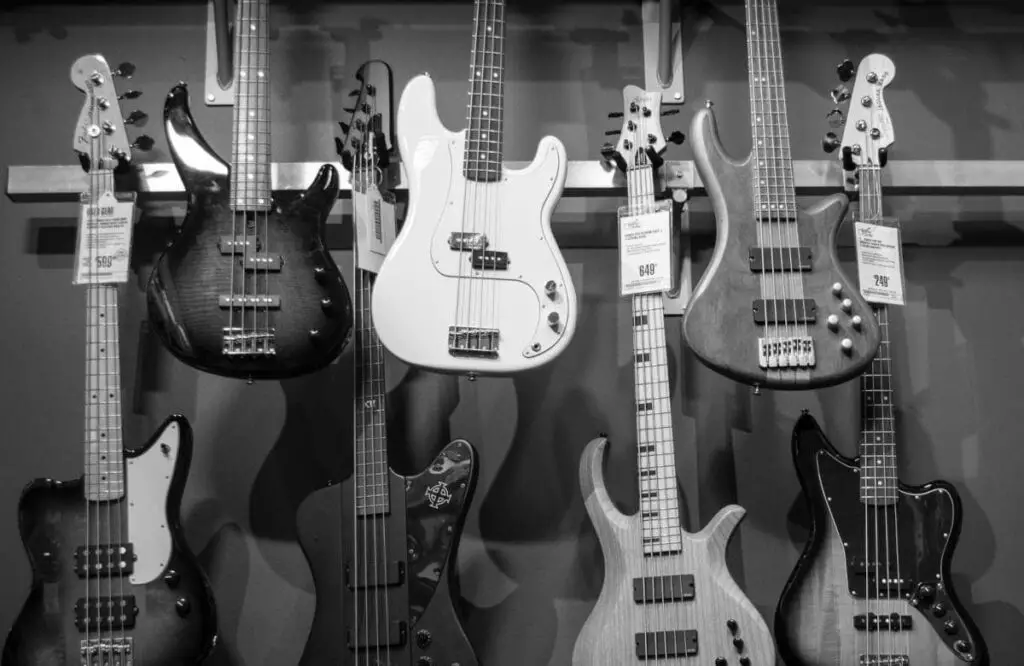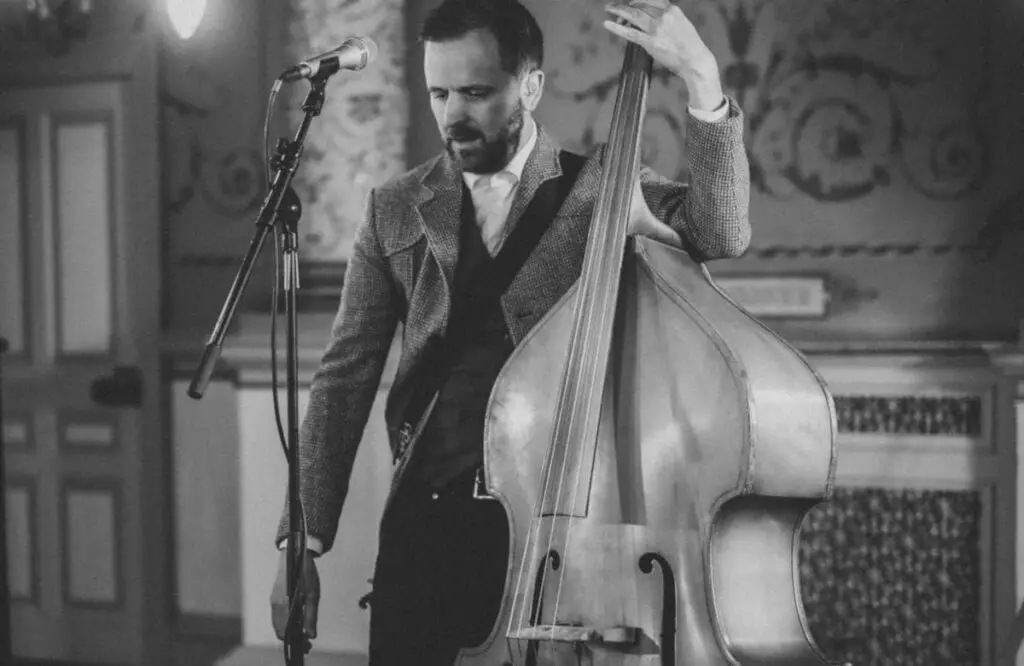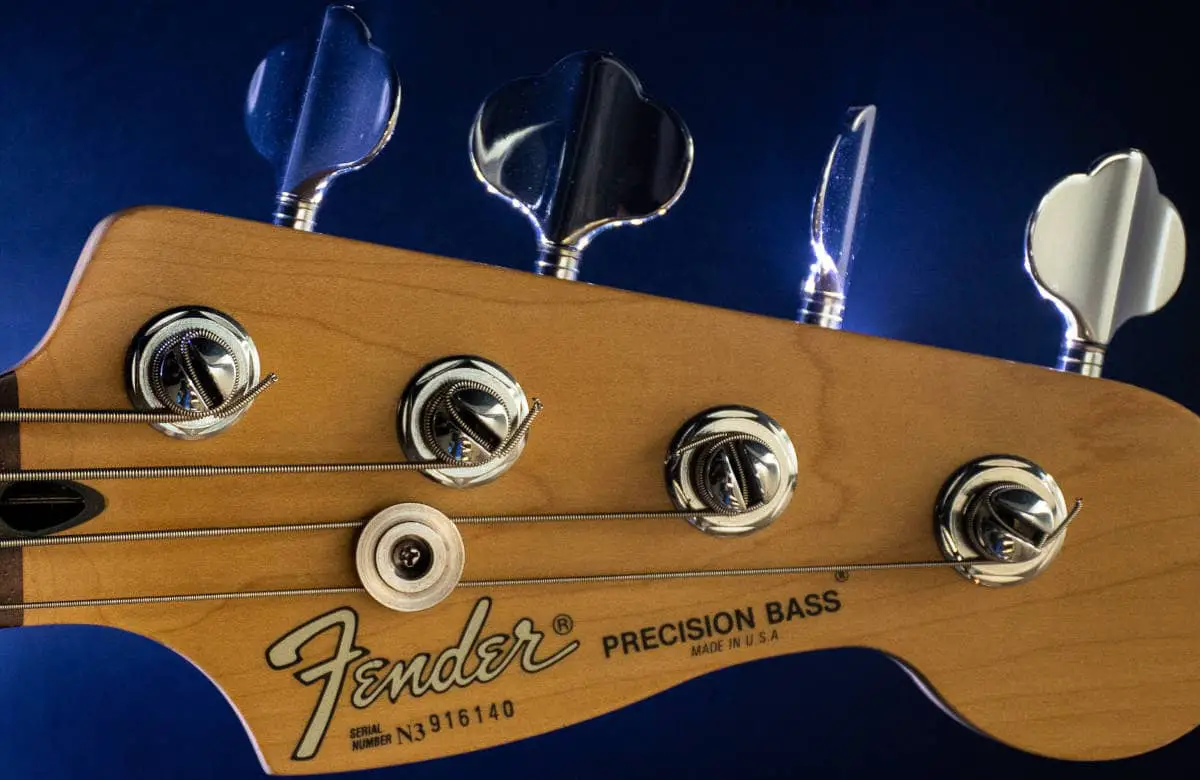Like many other bassists, my first instrument was a 4-string. It took me several years of playing before I actually questioned why this was the case. Guitars have 6 strings, and there are basses with 3,5,6, and even 15 strings, yet we mainly think of the bass as a 4-string instrument. So, why does a bass only have 4 strings?
The electric bass guitar is based on the upright double bass, which has 4-strings. Fender developed the 4-string Precision Bass in 1951 as an alternative for upright bass players. This design has remained the staple for what we associate with the bass guitar since.
4 string instruments are common in classical music, and the bass is one of many modern instruments that are based on the orchestra.
But why has it remained this way? There are 6-string basses out there, so why is not everyone just playing those?
Why do basses have fewer strings than guitars?
Guitars are tuned in a range where we can easily hear chords whereas basses are tuned in a deeper range where chords become muddy. Thus, bassists generally play one note at a time, which requires fewer strings.
The bass is also a bridge instrument, which means it fulfills a role both in the melodic and rhythmic sections in a band setting. In most modern genres the bass thus needs to work together with the drums, as well as the guitar or piano.
Thus, the bass often plays deep grooves or root notes that work as a bridge between percussion and melody. As the bass rarely plays chords and instead plays individual notes, there is less need for more strings than on a guitar, which mainly plays chords.
Furthermore, the bass is tuned an octave lower than the guitar. The result of this is that deep bass chords sound muddy and are hard to distinguish melodically as opposed to the guitar.
In addition to not being needed in a band setting, playing multiple strings on the bass at once can be unpleasant to the ear, particularly in the lower range.
Lastly, Melodic bass players such as Paul McCarthy, Geddy Lee, and Cliff Burton have all been able to make incredible bass lines with the 4-string. The 4-string has offered them enough flexibility to make complex bass lines that also remain in the range that’s expected of a bassist in a band.
For these reasons, we can now see why the most common basses have 4 strings, rather than 5 or 6.

The point of 3,5 and 6 string bass
While 4-string basses are by far the most common, many bassists prefer having more strings. Some even prefer having fewer.
Here are the main reasons people play basses with an unconventional amount of strings:
3-String bass:
Nowadays, 3-string basses are rare. In modern music, 3-strings are generally more of a stylistic choice than a practical one. A historic example of a 3-string is the Russian Balalaika bass. This instrument has been utilized by modern acts such as Katzenjammer, providing them with a unique look and sound.
5-string bass:
5-strings are generally tuned BEADG, which means they have an even deeper range than the 4-string which is tuned EADG. The 5-string is thus common in heavier genres like death metal, where guitars are tuned lower. Many bassists thus prefer playing a 5-string over having a tuned down 4-string.
6-string bass:
6-strings are commonly tuned BEADGC. This means that you have the benefit of a deeper string like the 5-string, while also having a higher melodic reach. In genres like progressive metal where bassists play heavy riffs, melodic parts, and solos, 6-strings are thus more common. 6-strings have also been utilized to great effect in jazz and by solo bassists as these genres allow for more experimental and dynamic playing.

Why does the bass only have 4 strings in the first place?
In 1542, Silvestro Ganassi invented the Bass Viola De Gamba. This instrument was the progenitor for the double bass, which the modern electric bass is modeled after.
Interestingly, the Viola De Gamba had 6 strings and was tuned DGCEAD.
In 1585, Ventura Linarol made a Bass Viola De Gamba that had the deepest 4 strings tuned similar to modern basses: EADG. At this point in time, this was unconventional and there were still disagreements about standard tunings.
Through the 1600s and 1700s, the instrument was slowly adapted to what we know as the double bass today.
In the mid-1700s double basses were typically made with 3-strings. These were common all the way till the 1830s when 4-string double basses started to become more common. 3 and 4 strings were both common throughout the 1800s.
While 5-string double basses also became common during the 1900s, the 4-string double bass eventually became the norm.
Leo Fender modeled the 4-string Fender Precision Bass after the double bass in the 1950s. While there had been previous attempts at creating an electric bass guitar previously, this was the first attempt that saw mainstream success.
Thus, the 4-string bass guitar and its role in modern music are based on more than 400 years of orchestral evolution. Like the modern double bass, the bass guitar does its job well, and thus most bassists do not feel the need for additional strings to fulfill their role in a band.
Conclusion
The bass guitar is modeled after the double bass. This ended up working so well that there has been little need for change since the bass guitar’s invention.
By being a bridge instrument and having a deep range the bass works best when notes are played individually. For this purpose, 4 strings are just perfect in almost all modern genres of music.
While some bassists prefer 5 or 6-strings, the majority of famous bassists have played 4-strings and have not felt limited by the number of strings.
In summary, the bass guitar ended up having 4 strings due to the double bass’s role in the orchestra at the time. This ended up working so well in contemporary music too that there has been little need to deviate from the 4-string and it thus remains the staple bass guitar today.

